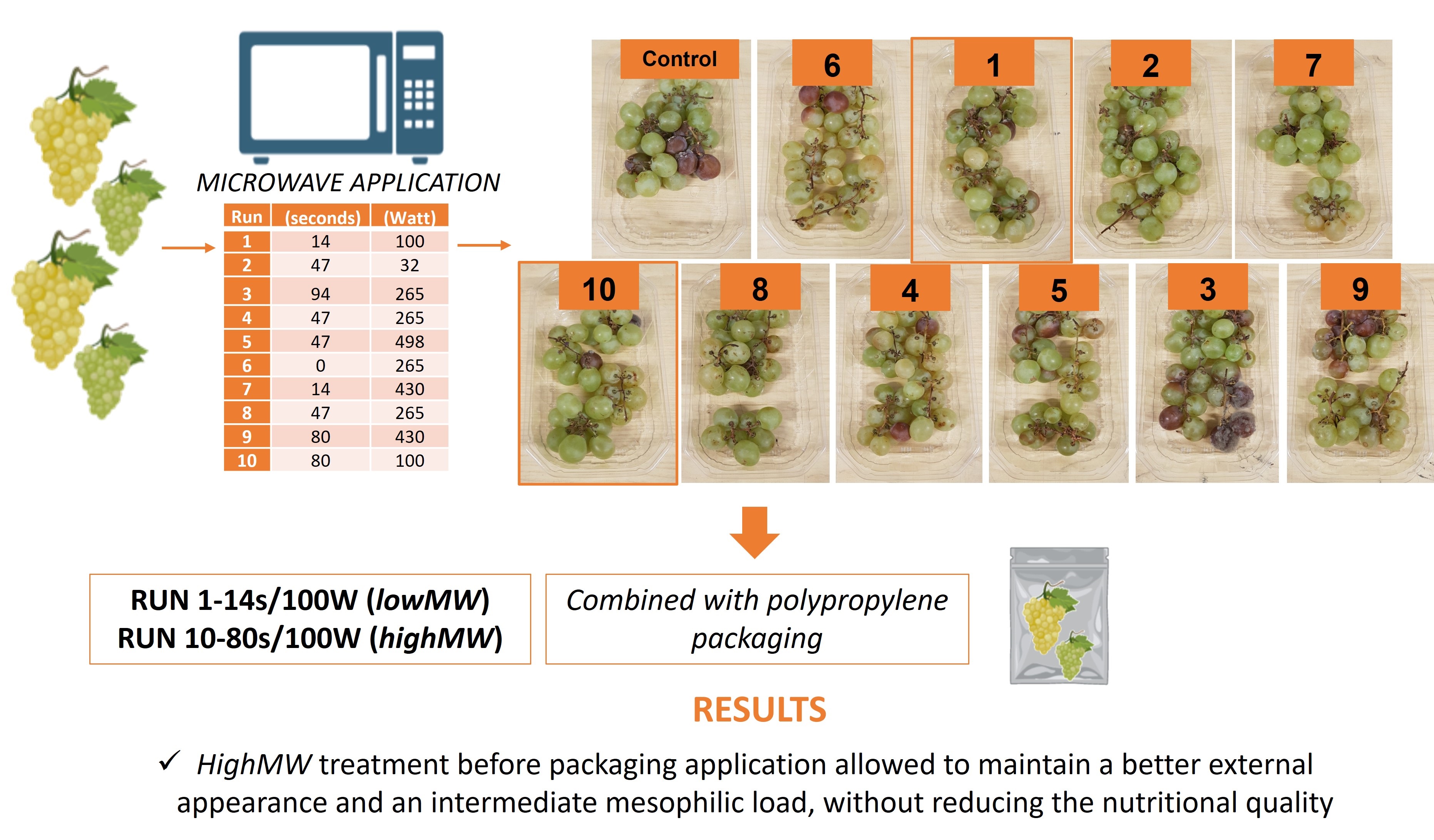
Published 2023-01-17
Keywords
- Botrytis cinerea,
- external appearance,
- microbiological quality,
- microwave energy,
- mold development
- ready-to-use grape ...More
How to Cite
Copyright (c) 2023 Maria Lucia Valeria de Chiara, Nicola De Simone, Giuseppe Spano, Maria Luisa Amodio, Giancarlo Colelli

This work is licensed under a Creative Commons Attribution 4.0 International License.
Funding data
-
Regione Puglia
Grant numbers Regional project “Research for Innovation”, funded by “POR PUGLIA FESR FSE 2014- 2020 - Azione 10.4 - interventi volti a promuovere la ricerca e per l’istruzione universitaria”
Abstract
Table grapes are characterized by high susceptibility to mold development during post-harvest, mostly due to Botrytis cinerea. Microwave application on ready-to-eat product can represent an alternative to antifungal treatment. With the aim of identifying the maximum energy that can be applied on grape without detrimental effects a Central Composite Design was developed testing the application of 10 combinations of treatment time (seconds) and microwave power (Watt). As a result, energies above 8000 kJ negatively affected the sensorial quality of fresh product, both in the presence and absence of B. cinerea inoculum (106 log CFU g-1). The physico-chemical parameters did not show significant differences, but two time/power combinations improved sensory quality of table grape, being selected for the subsequent packaging trial: 14 s/100 W and 80 s/100 W. Treatments were applied before or after packaging in polypropylene bags. At the end of storage period, 100 W applied for 80 seconds before packaging led to a better external appearance of the product than the other treatments, maintaining an intermediate level of mesophilic bacterial load and no significant differences in terms of nutritional quality. 80 seconds at 100 Watt combined with packaging can represent a valuable starting point for further experiments.




